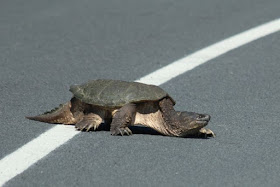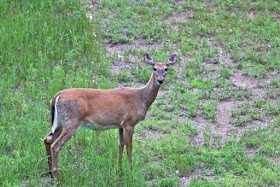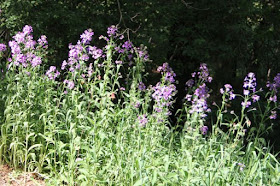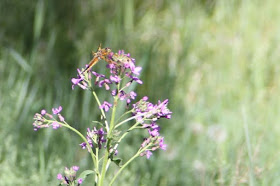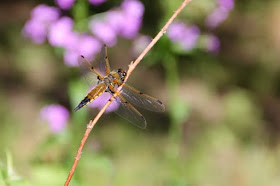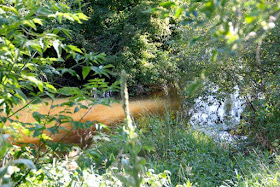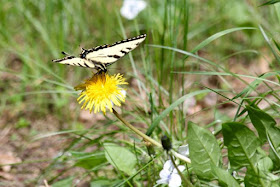 |
| roadside yellow goat's beard
Photo by J. Harrington
|
This morning the Better Half and I headed for the St. Croix River Visitors Center to see the art exhibit before it moved on. I'm glad we did. The Center is worth a visit if you're in the neighborhood of Taylors Falls | St. Croix Falls, whether there's a special art exhibit or not. In fact, I'm looking forward to doing some sitting and sunning and writing there during the Summer and Autumn.
 |
| roadside red clover
Photo by J. Harrington
|
Corn is about hand-high in most of the fields we drove by. They looked like they were covered in short, green fur. In our back road wandering, we discovered several of the "solar farms" being developed in our county. Pictures will be forthcoming when it's less scattered showery, in hopes sunshine will do something to make solar farms more photogenic. One field we saw was just full of metal posts sticking up looking like a vineyard from hell. I'll be curious to see if there are any reflection issues along surrounding roads as development proceeds and PV panels get installed.
 |
| roadside
Photo by J. Harrington
|
The fact that we've lived in the St. Croix Valley for several decades, and I had yet to get around to visiting the St Croix Visitors Center until today reminded me that, despite having been born and raised in Boston, I hadn't visited Old Ironsides until I was in my 20's and some out of town visitors wanted to go see it. Ephemeral wildflowers and seasonal migrations are best experienced in the brief period when they occur. Because some treasures are "always there," should we take them for granted and get to them only when we have nothing better to do? Not if we're wise. I, for one, am still working on that long-standing problem of getting "too soon old and too late smart." There's still much to learn and enjoy about the place I've called home for much of my adult life.
A River
By John Poch
God knows the law of life is death,and you can feel it in your warbler neck,your river-quick high stick wristat the end of day. But the trophies:a goldfinch tearing up a pink thistle,a magpie dipping her wing tipsin a white cloud, an ouzel barrelinghip-high upstream with a warning.You wish you had a river. To makea river, it takes some mountains.Some rain to watershed. You wishyou had a steady meadow and pink thistlesbobbing at the border for your horizons,pale robins bouncing their good posturesin the spruce shadows. Instead, the lawof life comes for you like three menand a car. In your dreams, you win them overwith your dreams: a goldfinch tearing upa pink thistle. A magpie so slowshe knows how to keep death at bay,she takes her time with argumentand hides her royal blue in black.Shy as a blue grouse, nevertheless Goddoesn’t forget his green mountains.You wish you had a river.
********************************************
Thanks for visiting. Come again when you can.
Please be kind to each other while you can.
